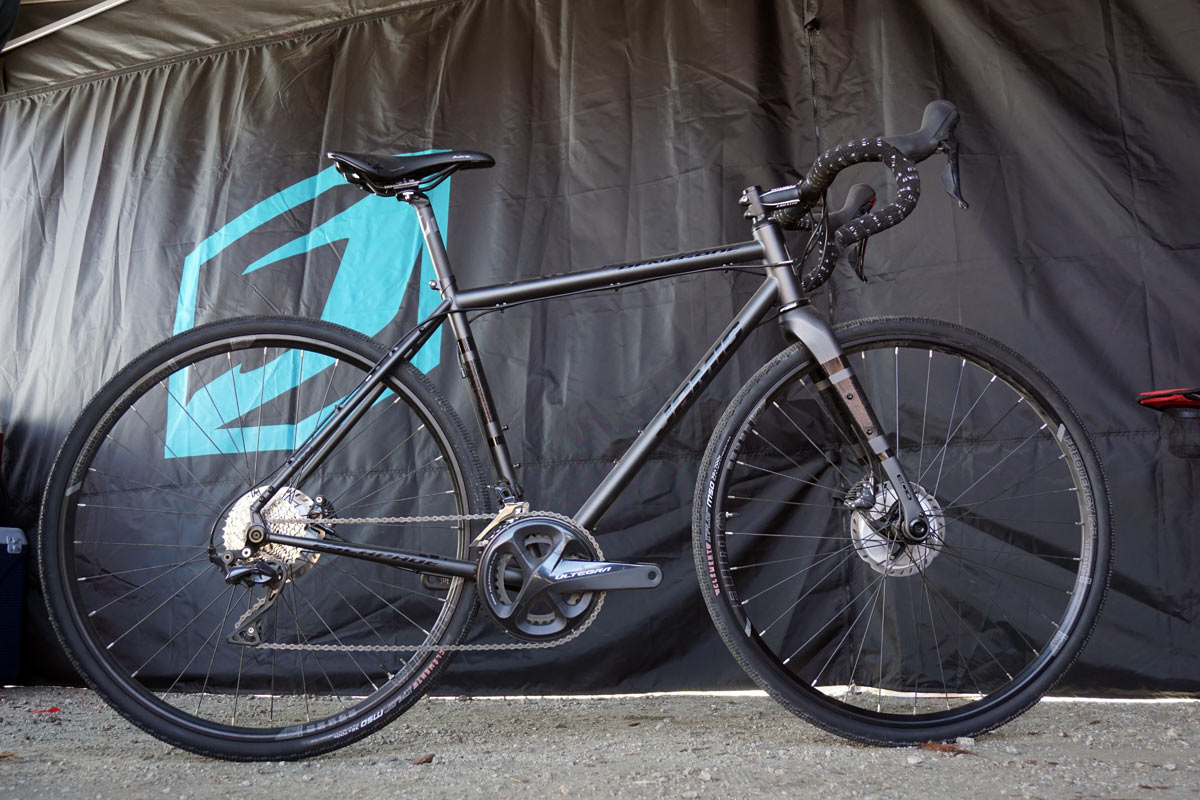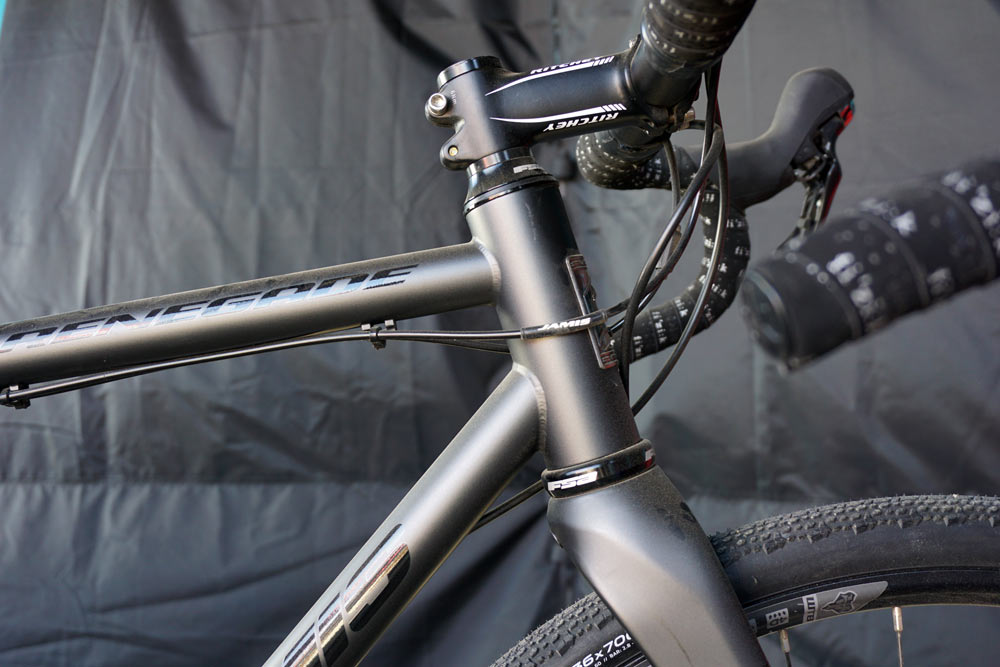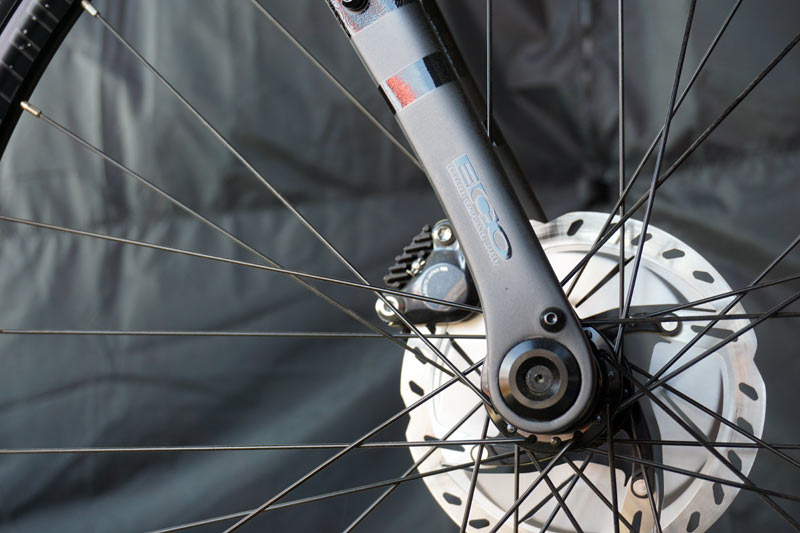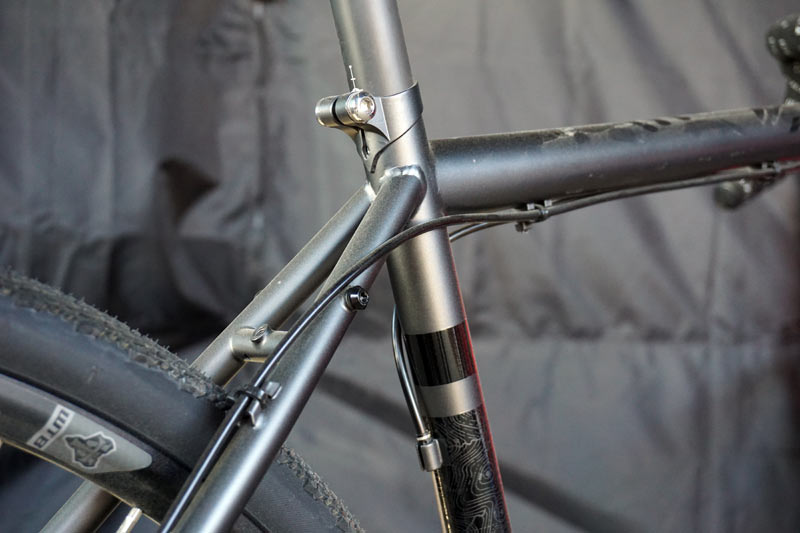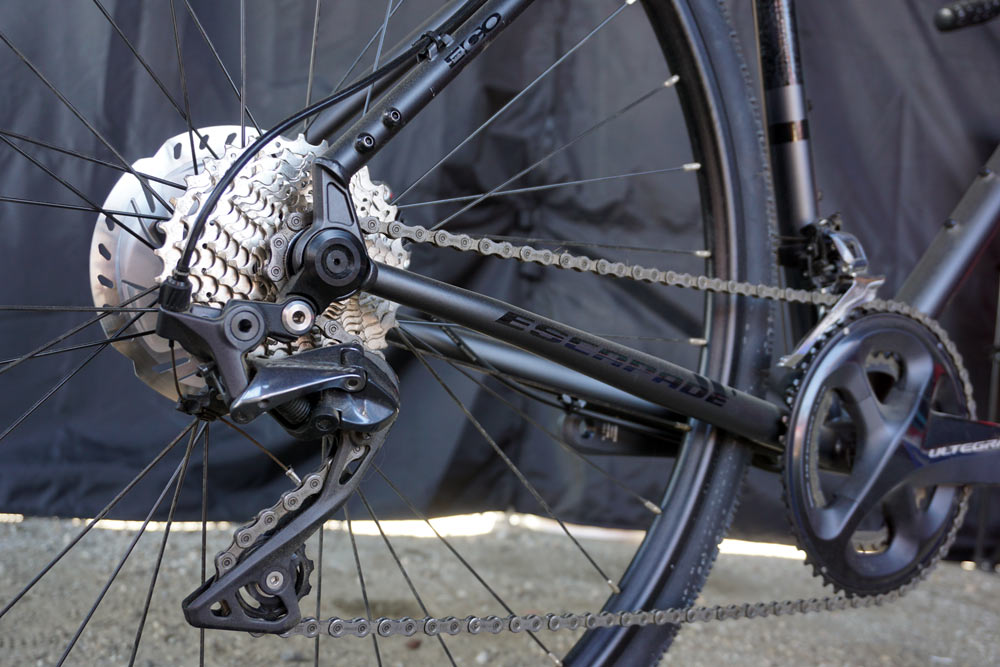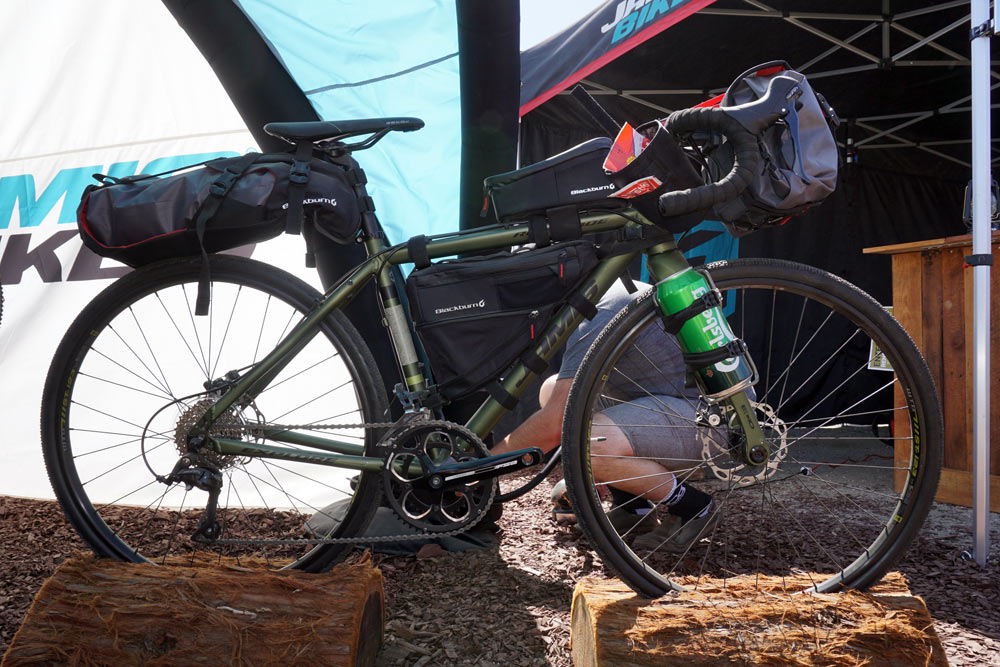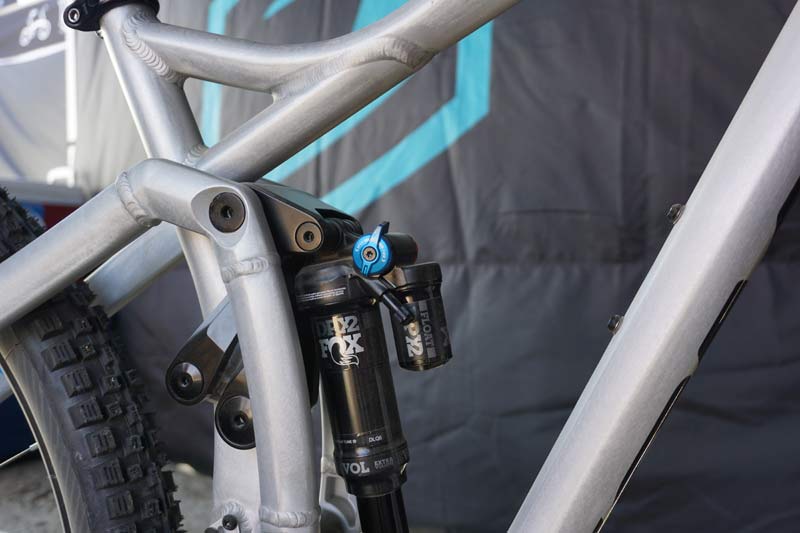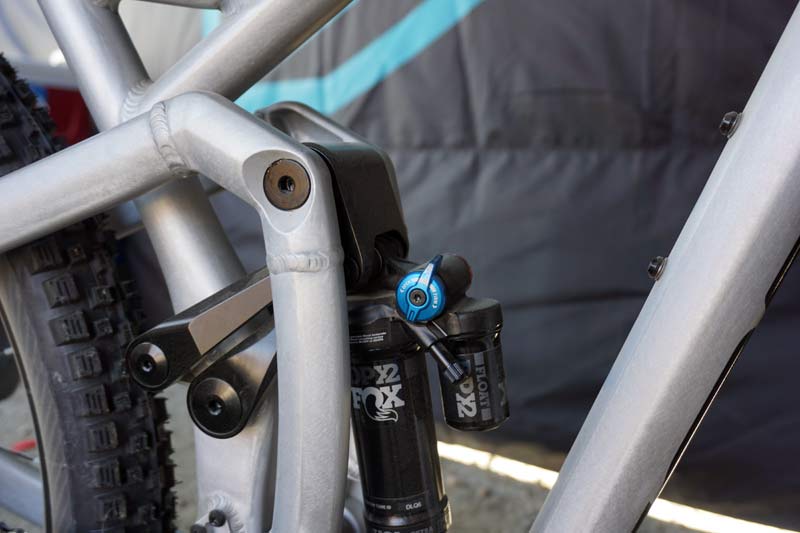Missing from their lineup announcement earlier this year, which included the new youth-sized gravel adventure bikes, was the Jamis Renegade Escapade. Slotting in at the top of their steel-framed lineup inside the Renegade Family, it offers a similar price point to the base carbon model, but with upgraded Reynolds 631 steel and a full Shimano Ultegra group with hydraulic disc brakes.
The frame is double butted Reynolds 631 chromoly with a 44mm headtube to fit any type of fork. The frames get size specific geometry throughout, with the ability to run up to 700×42 or 650×47 tires. Smaller frame sizes, up to a 48, come with 650B wheels and tires stock, and 700c wheels on larger frames (36mm tires are spec’d on both).
It’s built with their carbon fork, which also gets different offsets depending on frame size. The legs sweep forward, then place the dropouts behind them, a design that helps with fore/aft flex to mute bumps without affecting lateral stiffness and handling prowess.
Like the rest of the line, frame mounts for racks, bags, bottle cages and more are abundant and well placed.
Thru axles front and rear keep it stiff and modern. Retail is $2,699 and includes a Ritchey cockpit, WTB rims and Fizik saddle. Claimed weight for the complete bike is 22.0lb.
The Renegade Explore is another new model, featuring a 6061 alloy frameset with the same carbon fork. Sure, that seat bag could stand to be cinched up a little tighter, but this built shows just some of what you can strap and bolt to the bike…the rear rack mounts aren’t even being used here.
Retail on the Explore is just $999 with Shimano Sora and Tektro mechanical disc brakes. Claimed weight is 23lb complete.
Closeup on 3VO Suspension
Announced just prior to Sea Otter, the all-new Jamis 3VO suspension platform uses Chris Currie’s design. The concept was years in the making, and Jamis is the first to license it. You can read the full tech story in this post, but we wanted to see it in action. Put it “full screen” for better detail and note how the two upper control arms dictate the upper linkage’s path, which drives the shock’s compression rate much differently than a regular, fixed pivot location ever could.
Above, the system sits uncompressed, and below, fully compressed.
Essentially, the top upper arm connects at the shock’s mounting point on the linkage, pulling it down. The bottom upper arm connects at the rear triangle’s mounting point and, along with the lower linkage, controls the actual movement path of the rear triangle and axle. The goal is to provide the best instant center position possible throughout the entire travel range and gear range.
